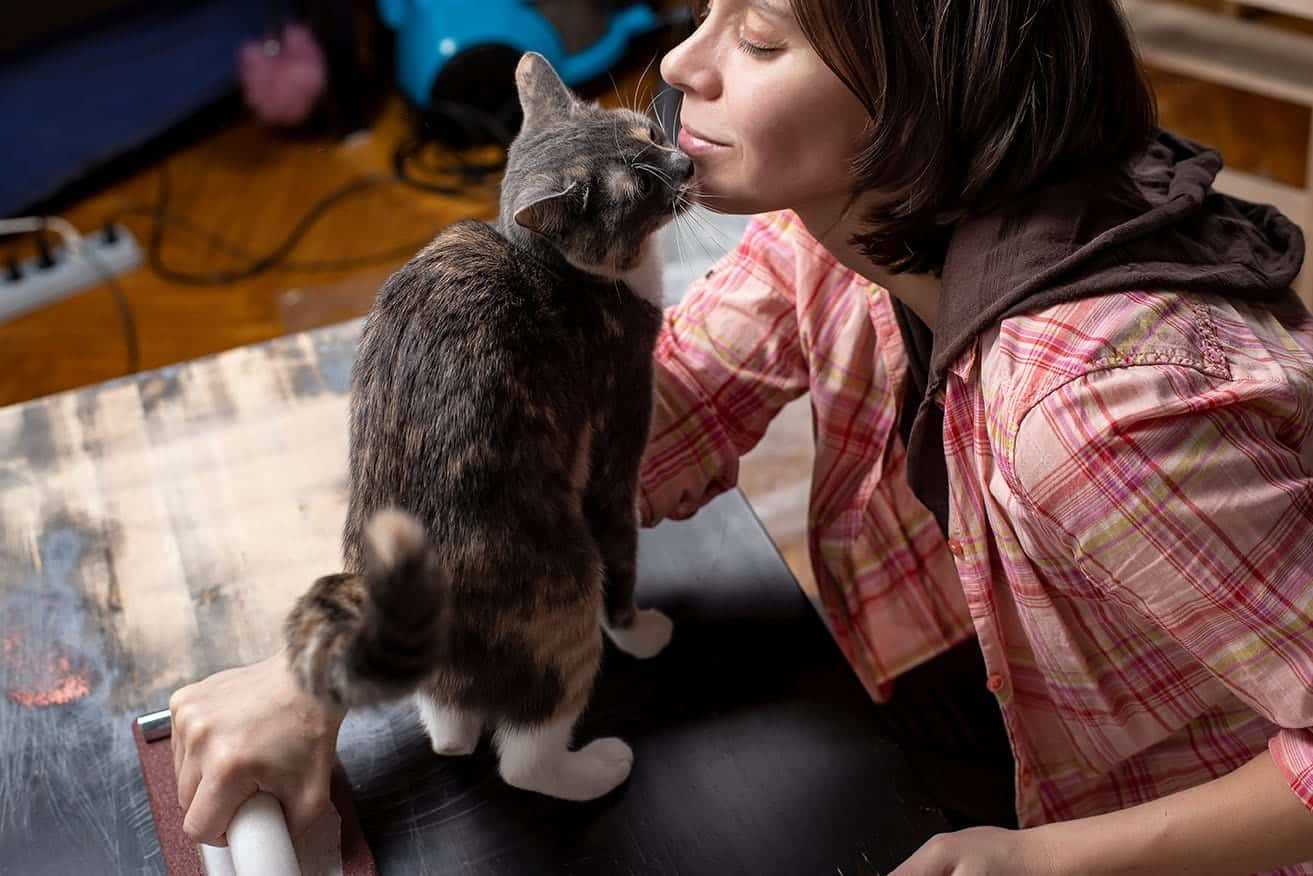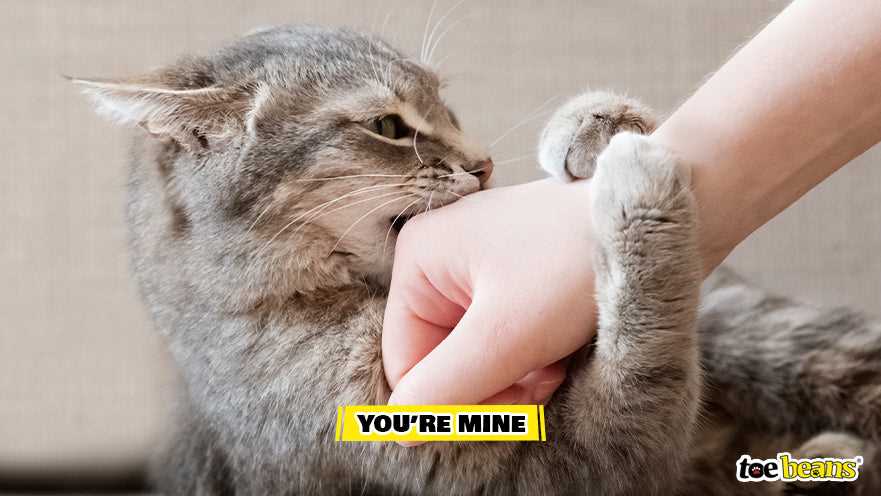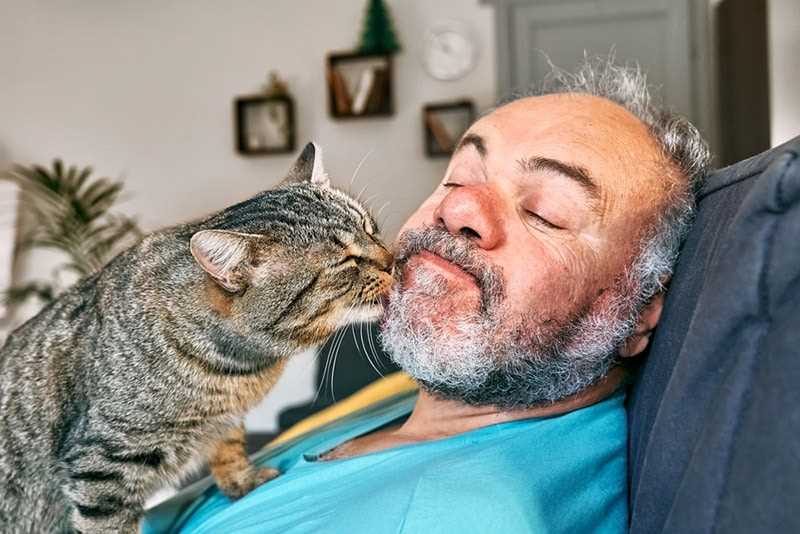

First off, if I’m right up in your space, it’s likely because I’m seeking your attention. The warmth and comfort of your presence provide me with a sense of security and affection. I thrive on those moments when I can feel your heartbeat and see your smile up close.
Another reason for my proximity is curiosity. My inquisitive nature drives me to explore everything around me, including your face. Those intriguing expressions and subtle movements capture my attention. I’m just trying to understand your world better.
Additionally, I may be marking my territory. By getting close, I’m leaving my scent, which signifies that I feel at home with you. This is a way for me to strengthen our bond and communicate that I trust you.
Lastly, don’t underestimate the power of playfulness. Sometimes, I just want to engage with you in a light-hearted manner. Those close encounters can lead to delightful moments of fun and laughter. So, the next time I invade your personal space, remember: it’s all about connection!
Understanding Feline Affection and Attention-Seeking Behavior

When I nuzzle close, it’s my way of expressing love and companionship. This behavior is rooted in a deep instinct to bond. My whiskers are highly sensitive, so getting up close allows me to gather information about my human’s mood and scent. This proximity builds a connection, making both of us feel secure.
Leaning against you or rubbing my head is another affectionate gesture. It’s not just for comfort; this action releases pheromones, marking you as part of my territory. This enhances our bond and reassures me that I’m in a safe environment. If I’m persistent, it’s likely I’m seeking attention or playtime, wanting to engage and interact.
Vocalizations also play a role in my attention-seeking antics. I have a range of sounds, from gentle purrs to louder meows, each conveying different messages. If I’m trying to engage you, I’ll use specific tones that indicate excitement or a desire for interaction. Pay attention to my body language; it’s just as important as my vocalizations.
Sometimes, I might invade personal space to express my need for food or play. This behavior is a clear signal that I’m ready for fun or meal time. Establishing routines can help both of us understand when it’s time to play or eat, reducing disruptive behavior.
Understanding my affection and attention-seeking behaviors can deepen our relationship. It’s all about communication and recognizing what I’m trying to convey. Each interaction strengthens our bond, creating a joyful and harmonious companionship. Let’s enjoy these moments together!
Interpreting Your Feline’s Body Language During Close Encounters

Observe the ears first; when they are pointed forward, it signals curiosity or interest. If they are pinned back, it could indicate irritation or fear. Tail position also tells a story–an upright tail suggests confidence and happiness, while a low or twitching tail might signal agitation or anxiety.
Understanding Facial Expressions
Look closely at the eyes. Slow blinking can be a sign of affection, while dilated pupils may indicate excitement or fear. Pay attention to whisker movement as well; whiskers that are relaxed show comfort, while whiskers that are pushed forward can denote alertness or aggression.
Behavioral Cues to Watch For
Physical closeness can be a form of bonding. If I lean in, it’s likely a request for attention. However, if I back away abruptly, it’s best to respect my space. Also, purring often indicates contentment, but if accompanied by other signs like flattened ears, it might signal discomfort despite the sound. For those who have questions about health, check out this helpful guide on how to treat coccidia in cats at home naturally or learn about how long do female cats mark their territory with urine.
Managing Space While Respecting Feline Needs

To maintain harmony, set clear boundaries in your territory. Create designated areas where I can comfortably be close to you without overwhelming your personal space. A cozy blanket or a soft bed nearby allows me to chill while still feeling connected.
Interactive Zones

Establish interactive zones with toys and climbing structures. This encourages me to explore and engage without crowding you. A cat tree near your workspace can serve as my lookout point while you focus on tasks.
Scheduled Affection
Create a routine for affection through scheduled cuddle times or play sessions. This gives me something to look forward to while respecting your need for personal moments. Use treats to reinforce this positive interaction, making it a win-win for both of us.
First off, if I’m right up in your space, it’s likely because I’m seeking your attention. The warmth and comfort of your presence provide me with a sense of security and affection. I thrive on those moments when I can feel your heartbeat and see your smile up close.
Another reason for my proximity is curiosity. My inquisitive nature drives me to explore everything around me, including your face. Those intriguing expressions and subtle movements capture my attention. I’m just trying to understand your world better.
Additionally, I may be marking my territory. By getting close, I’m leaving my scent, which signifies that I feel at home with you. This is a way for me to strengthen our bond and communicate that I trust you.
Lastly, don’t underestimate the power of playfulness. Sometimes, I just want to engage with you in a light-hearted manner. Those close encounters can lead to delightful moments of fun and laughter. So, the next time I invade your personal space, remember: it’s all about connection!
Understanding Feline Affection and Attention-Seeking Behavior

When I nuzzle close, it’s my way of expressing love and companionship. This behavior is rooted in a deep instinct to bond. My whiskers are highly sensitive, so getting up close allows me to gather information about my human’s mood and scent. This proximity builds a connection, making both of us feel secure.
Leaning against you or rubbing my head is another affectionate gesture. It’s not just for comfort; this action releases pheromones, marking you as part of my territory. This enhances our bond and reassures me that I’m in a safe environment. If I’m persistent, it’s likely I’m seeking attention or playtime, wanting to engage and interact.
Vocalizations also play a role in my attention-seeking antics. I have a range of sounds, from gentle purrs to louder meows, each conveying different messages. If I’m trying to engage you, I’ll use specific tones that indicate excitement or a desire for interaction. Pay attention to my body language; it’s just as important as my vocalizations.
Sometimes, I might invade personal space to express my need for food or play. This behavior is a clear signal that I’m ready for fun or meal time. Establishing routines can help both of us understand when it’s time to play or eat, reducing disruptive behavior.
Understanding my affection and attention-seeking behaviors can deepen our relationship. It’s all about communication and recognizing what I’m trying to convey. Each interaction strengthens our bond, creating a joyful and harmonious companionship. Let’s enjoy these moments together!
Interpreting Your Feline’s Body Language During Close Encounters

Observe the ears first; when they are pointed forward, it signals curiosity or interest. If they are pinned back, it could indicate irritation or fear. Tail position also tells a story–an upright tail suggests confidence and happiness, while a low or twitching tail might signal agitation or anxiety.
Understanding Facial Expressions
Look closely at the eyes. Slow blinking can be a sign of affection, while dilated pupils may indicate excitement or fear. Pay attention to whisker movement as well; whiskers that are relaxed show comfort, while whiskers that are pushed forward can denote alertness or aggression.
Behavioral Cues to Watch For
Physical closeness can be a form of bonding. If I lean in, it’s likely a request for attention. However, if I back away abruptly, it’s best to respect my space. Also, purring often indicates contentment, but if accompanied by other signs like flattened ears, it might signal discomfort despite the sound. For those who have questions about health, check out this helpful guide on how to treat coccidia in cats at home naturally or learn about how long do female cats mark their territory with urine.
Managing Space While Respecting Feline Needs

To maintain harmony, set clear boundaries in your territory. Create designated areas where I can comfortably be close to you without overwhelming your personal space. A cozy blanket or a soft bed nearby allows me to chill while still feeling connected.
Interactive Zones

Establish interactive zones with toys and climbing structures. This encourages me to explore and engage without crowding you. A cat tree near your workspace can serve as my lookout point while you focus on tasks.
Scheduled Affection
Create a routine for affection through scheduled cuddle times or play sessions. This gives me something to look forward to while respecting your need for personal moments. Use treats to reinforce this positive interaction, making it a win-win for both of us.
First off, if I’m right up in your space, it’s likely because I’m seeking your attention. The warmth and comfort of your presence provide me with a sense of security and affection. I thrive on those moments when I can feel your heartbeat and see your smile up close.
Another reason for my proximity is curiosity. My inquisitive nature drives me to explore everything around me, including your face. Those intriguing expressions and subtle movements capture my attention. I’m just trying to understand your world better.
Additionally, I may be marking my territory. By getting close, I’m leaving my scent, which signifies that I feel at home with you. This is a way for me to strengthen our bond and communicate that I trust you.
Lastly, don’t underestimate the power of playfulness. Sometimes, I just want to engage with you in a light-hearted manner. Those close encounters can lead to delightful moments of fun and laughter. So, the next time I invade your personal space, remember: it’s all about connection!
Understanding Feline Affection and Attention-Seeking Behavior

When I nuzzle close, it’s my way of expressing love and companionship. This behavior is rooted in a deep instinct to bond. My whiskers are highly sensitive, so getting up close allows me to gather information about my human’s mood and scent. This proximity builds a connection, making both of us feel secure.
Leaning against you or rubbing my head is another affectionate gesture. It’s not just for comfort; this action releases pheromones, marking you as part of my territory. This enhances our bond and reassures me that I’m in a safe environment. If I’m persistent, it’s likely I’m seeking attention or playtime, wanting to engage and interact.
Vocalizations also play a role in my attention-seeking antics. I have a range of sounds, from gentle purrs to louder meows, each conveying different messages. If I’m trying to engage you, I’ll use specific tones that indicate excitement or a desire for interaction. Pay attention to my body language; it’s just as important as my vocalizations.
Sometimes, I might invade personal space to express my need for food or play. This behavior is a clear signal that I’m ready for fun or meal time. Establishing routines can help both of us understand when it’s time to play or eat, reducing disruptive behavior.
Understanding my affection and attention-seeking behaviors can deepen our relationship. It’s all about communication and recognizing what I’m trying to convey. Each interaction strengthens our bond, creating a joyful and harmonious companionship. Let’s enjoy these moments together!
Interpreting Your Feline’s Body Language During Close Encounters

Observe the ears first; when they are pointed forward, it signals curiosity or interest. If they are pinned back, it could indicate irritation or fear. Tail position also tells a story–an upright tail suggests confidence and happiness, while a low or twitching tail might signal agitation or anxiety.
Understanding Facial Expressions
Look closely at the eyes. Slow blinking can be a sign of affection, while dilated pupils may indicate excitement or fear. Pay attention to whisker movement as well; whiskers that are relaxed show comfort, while whiskers that are pushed forward can denote alertness or aggression.
Behavioral Cues to Watch For
Physical closeness can be a form of bonding. If I lean in, it’s likely a request for attention. However, if I back away abruptly, it’s best to respect my space. Also, purring often indicates contentment, but if accompanied by other signs like flattened ears, it might signal discomfort despite the sound. For those who have questions about health, check out this helpful guide on how to treat coccidia in cats at home naturally or learn about how long do female cats mark their territory with urine.
Managing Space While Respecting Feline Needs

To maintain harmony, set clear boundaries in your territory. Create designated areas where I can comfortably be close to you without overwhelming your personal space. A cozy blanket or a soft bed nearby allows me to chill while still feeling connected.
Interactive Zones

Establish interactive zones with toys and climbing structures. This encourages me to explore and engage without crowding you. A cat tree near your workspace can serve as my lookout point while you focus on tasks.
Scheduled Affection
Create a routine for affection through scheduled cuddle times or play sessions. This gives me something to look forward to while respecting your need for personal moments. Use treats to reinforce this positive interaction, making it a win-win for both of us.








